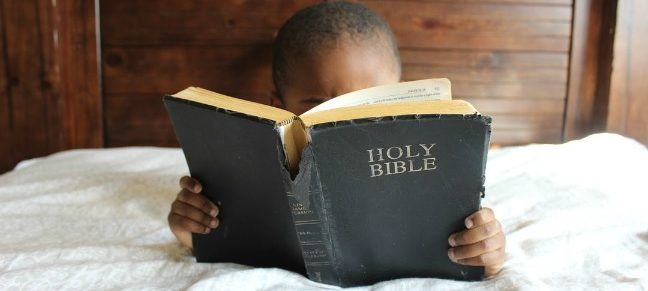Jan. 27 Reading: Exodus 28-29 Commentary
Below is our Exodus 28-29 commentary from our Beginning to End Bible reading program. You can find an email link at the end of this page to share your thoughts or comments with us.
Key Verse(s):
“Now take Aaron your brother, and his sons with him, from among the children of Israel, that he may minister to Me as priest…” (Ex. 28:1)
Exodus 28
 Every nation or culture looks to someone as their earthly spiritual teacher. Today, it’s the church and the pastors who lead them. The New Testament tells us that Jesus serves as that mediator between mankind and God today. “For there is one God and one Mediator between God and men, the Man Christ Jesus” (I Timothy 2:5). It’s to Jesus that we confess our sins and ask for guidance and direction.
Every nation or culture looks to someone as their earthly spiritual teacher. Today, it’s the church and the pastors who lead them. The New Testament tells us that Jesus serves as that mediator between mankind and God today. “For there is one God and one Mediator between God and men, the Man Christ Jesus” (I Timothy 2:5). It’s to Jesus that we confess our sins and ask for guidance and direction.
However, in Israel’s time, it was the priesthood which God established and was led by Moses’ brother Aaron. As great a leader as Moses was, God did not choose him to fill this spiritual role for the people. The priests served as the mediator between God and mankind. They helped the people maintain their proper standing before God. But ultimately their main focus was honoring the Lord through their service.
God chose Aaron and his four sons – Nadab, Abihu, Eleazar and Ithamar – to serve as priests. In time, there would be many others who served in this role under their leadership. Later, God would select the entire tribe of Levi to be used for His service (Numbers 3).
Priestly Garments
God commanded Moses to choose skilled artisans to make garments for Aaron. The garments were to be consecrated as holy so that Aaron could minister before the Lord as priest. They were to be magnificent pieces of clothing, for “glory and for beauty” (vv. 2-3).
The pieces of clothing included:
1. The Ephod (vv. 5-14). This piece was a colorful cape or sash made of fine linen. It covered Aaron’s chest and back, had seams at the shoulders, a band around his waist and memorial stones on the shoulders.
2. The Breastplate (vv. 15-30). The breastplate was essentially a small pouch that hung from gold chains around Aaron’s neck . They decorated the pouch with twelve stones, which represented the 12 tribes of Israel. It also held the Urim (meaning “lights”) and Thummim (meaning “perfections’)(Ex. 28:30), which were special stones used by the priests, possibly in rituals used to discern the Lord’s will on a matter.
3. A Robe (v. 31-35). Another long flowing garment made of blue . It was decorated with pomegranates of different colors. Bells were also attached to it so that they made noise as the priests moved about the sacred places.
4. A Woven Tunic (v.39).
5. A Turban (v. 36-38). Upon the high priests head rested a turban. On the turban was a gold plate with the inscription “Holiness to the Lord” . It symbolized that Aaron would have to “…bear the iniquity of the holy things which the children of Israel hallow in all their holy gifts; and it shall always be on his forehead, that they may be accepted before the Lord“ (v. 38).
6. A Sash (v. 39).
Exodus 29
Exodus 29 describes the ritual for consecrating Aaron and his sons for ministering as priests. Aaron and his sons were first to be washed with water. Then, Aaron adorned the articles of clothing described in Chap. 28 and was anointed with oil.
After this, a sacrifice of a bull was made by the door of the tabernacle with some of the blood being sprinkled on the horns of the altar (vv. 10-12). The fat and organs of the animal were burned on the altar with the flesh and skin being burned outside the camp. This was considered a sin offering (v. 14).
Additional offerings were made including a burnt offering of a ram (vv. 15-18), a wave offering of a ram (vv. 22-24) and a heave offering (vv. 27-28).
Finally, God gave instructions on the daily offerings that were to be given (vv. 38-45).
Questions to Consider:
What person has helped shape your spiritual beliefs? You may not be able to be a priest today, but God still calls us to serve Him. What ministry can you be involved with to serve the Lord?
What other points would you want to know about in our Exodus 28-29 commentary? Email us here with questions or comments.
